This post is all about the 17 most beautiful and famous bridges in France!

France has quite a few rivers and waterways on its territory. At some point someone was looking to cross said river or waterway, leaving future generations with some beautiful bridges.
We have listed the most beautiful bridges, with wonderful stone arches, filled with history for you below. We’ve got more! We also have some very modern and boundaries-pushing architecture to explore!
We’ll take a trip around France and stop at some of the most remarkable bridges. We’ll start with all the Paris-based bridges and slowly migrate to other parts of France with landmarks you cannot miss!
17 most famous bridges in France
Most Famous Bridges of Paris
The Seine river crosses the beautiful city of Paris. It quickly became a necessity to have a few bridges to cross from the left bank of the city to the right bank. Paris has some of the most famous bridges in France.
We’ll look at some of the most iconic Parisian bridges from left to right as they appear on a map.
Pont de Bir-Hakeim
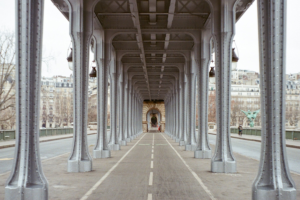
The Bir-Hakeim bridge is the first one on the list. It links the 15th arrondissement to the 16th arrondissements. The beautiful thing about this bridge is that it can be used by all types of vehicles: cars, bikes, buses, pedestrians, and the metro!
The bridge was constructed in 1905. The previous name of the bridge was Pont de Passy. In 1878 it was a walkway. It has been renamed in 1949 in memory of a famous battle of Bir-Hakeim during World War II taking place in the Libyan desert back in 1942.
You might have seen this one on many Instagram posts! It’s a favorite for wedding pictures and tourist pictures because you have a great view of the Eiffel Tower! It’s also the perfect place to admire the fireworks show that can be shot from the Eiffel tower on the 14th of July (national day) or on New Year’s (we don’t always have one on that date though).
So if you are planning on being on that bridge for one of those events, you might have to come early to secure a nice spot.
If you want to get to the bridge, these are the 2 closest métro stations: “Passy” or “Bir-Hakeim” on line 6.
Pont d’Iéna
The next bridge following the river Seine is the Pont d’Iéna.
This bridge is right in front of the Eiffel Tower, so you’ll most likely be on it or very near it during your visit. It’s quite a wide bridge, used by all means of transport except the métro. Crossing the bridge will get you to the Trocadéro.
This bridge has been named after the victory of the Napoleon Bonaparte army in 1806. The bridge was fully reserved for pedestrians during the Universal Exhibition of 1900.
The current Mayor of Paris is planning a huge project to bring this bridge back to its roots and make it pedestrian again. On top of that, there is a huge greening project in the area. This is all ahead of the 2024 Olympic Games to be held in Paris.
The closest metro station is “Trocadero” on lines 6 and 9.
Pont de l’Alma
This bridge has become famous for a very sad reason: Lady Diana died in a car accident very close to this bridge. In fact, you even have a Lady Di Memorium on one side of the bridge.
This arch bridge was first inaugurated in 1856 and it was once again named after a famous battle during the Crimean War started in 1853.
On the other side of the Seine river bank, you’ll find the Musée du Quai Branly. Jean Nouvel, the famous French architect, designed the bridge. The museum’s collection features indigenous art and cultures of Africa, Asia, Oceania, and the Americas.
The closest metro station is “Alma-Marceau” on line 9.
Pont Alexandre III
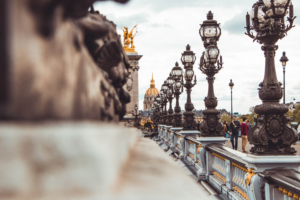
This bridge is very famous and one of the most iconic bridges in Paris.
The Russian Tsar Alexander III gave his name to this bridge as a symbol of the Franco-Russian friendship. Both nations concluded an alliance in 1891. The Russian Tsar and the French president laid down the bridge’s first stone.
The bridge was inaugurated for the Exposition Universelle of 1900. On the one hand, you had the Grand Palais and Petit Palais, also built for this exhibition. On the other side, you can admire the Invalided.
The technical requirements for the construction of the bridge were quite ambitious. Compared to previous bridges, this one does not have several arches to help support the weight. It only has one!
The bridge has a metal frame with 2 stone tunnels at each end. You can walk or bike under both!
Pont des Arts

You might have seen pictures of this bridge. It’s right in the heart of the city and a very popular spot for lovers. We should in fact rename it the Love Lock Bridge because all the couples write their initials on a lock (which you can buy directly on the bridge from street vendors) and attach it to the bridge.
The locks are removed every year by city officials who say that they are too heavy for the structure and they pose a safety hazard.
The name “Pont des Arts” is linked to the old name of the Louvre Palace, which used to be called the “Palais des Arts” (meaning the Palace of Arts).
This bridge allows you to go from the Institut de France to the Louvre museum. It is a pedestrian bridge.
The closest métro station is “Louvre-Rivoli” on line 1.
Pont Neuf
The Pont Neuf is the oldest bridge in Paris. Its construction was final in 1607 and it was the first stone bridge that crossed the river Seine entirely. It’s so special it’s even on the list of UNESCO World Heritage Site since 1991 (along with the other bridges of Paris).
It’s also the 3rd longest bridge in Paris (238 meters long), and it crosses the Île de la Cité. When it was first built, it was the first bridge to have a sidewalk. The little balconies that we can still admire today, were then occupied by merchants and artisans selling goods and arts.
It’s also the first bridge to have a statue on it. It’s a statue in the honor of king Henry IV for his involvement in the building of the bridge.
It even has its own dedicated metro station “Pont Neuf” on line 7.
Pont Marie
The Pont Marie allows you to go from the Paris city hall to the Île Saint-Louis. Christophe Marie, the structural engineer in charge of the construction, gave his name to this bridge.
This bridge was built between 1614 and 1635 and is almost as old as the Pont Neuf!
The Île Saint-Louis was underdeveloped and not very populated. You could only get there by boat, making it less practical than a bridge.
A few years after the bridge was built, houses were added to the bridge. Those were some quite small houses as the bridge had around 55 houses on it. In 1658 a flood almost took out all the bridge and the houses on it. A new bridge was built, in stone this time. The houses were not rebuilt on this new bridge.
To go and see this bridge today, get off at the metro station “Pont Marie” on line 7!
Passerelle Simone-de-Beauvoir
This is the furthest bridge to the right of Paris that we are going to talk about here. It links up the 12th and the 13th arrondissement of Paris.
It was quite recently built, as it was finished in 2006.
The bridge can only be used by pedestrians and bikes. The shape is probably the most distinct feature of the bridge: it looks kind of like a DNA string.
There are no arches in the water to support this 304 m-long bridge. It is made of wood and metal, and one of the architect firm working on this bridge also worked on another metal building in the city: the Eiffel Tower!
This is quite a nice bridge with some lovely curves.
This concludes all the bridges in Paris. We will now be exploring some other famous bridges in France. We will start with Normandy!
Normandy: let’s go to Honfleur
Pont de Normandie
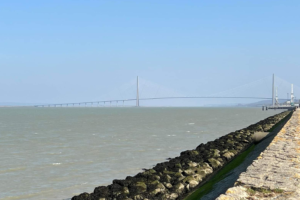
This bridge is a fairly recent one. The region was developing itself at the beginning of the 1970s, with more and more road traffic. It made great economical sense to link Le Havre to Honfleur to further support this development.
The then-Prime Minister Jacques Chirac laid the first stone in 1988. It took 7 years to build this cable-stayed bridge. It finally opened to the public in January 1995. In 1995, the Pont de Normandy was one of the longest cable-stayed bridges in the world.
This is the last bridge before the Seine empties into the ocean. There are very strong winds in this location, making the design of this bridge the most appropriate to resist this additional challenge.
The construction of the bridge was a real technological challenge. Here are a few reasons why: the bridge had to be at least 50 meters high, to not block the naval circulation underneath and there are very strong winds in this part of France.
The best view of this bridge is from Honfleur!
Provence – Let’s visit Avignon
We are now moving to southern France, near Avignon. This place has some of the most famous bridges in France!
Pont du Gard
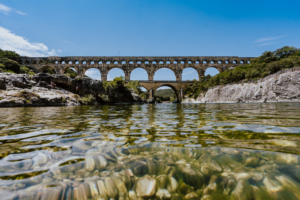
The Pont du Gard is the tallest bridge that we inherited from the Roman era. The bridge carried water over 50 km to the city of Nimes. This is one of the oldest standing bridges. The construction work finished in the 1st century.
When the Roman empire fell, the bridge’s use changed: from a bridge carrying water, it transformed into a toll bridge. It continued to be used as such over the years.
The bridge is in such good condition that it would be a shame to not visit it. The UNESCO World Heritage sites added the Pont du Gard to its list in 1985. It’s one of the most iconic landmarks in France!
Pont d’Avignon or the Pont Saint-Bénézet
Most French people know about this bridge! The children’s song “Sur le Pont d’Avignon” made is popular, especially amongst children.
The bridge dates back to the Middle Ages and crosses the Rhône river. We only have 4 arches from the original bridge left today.
The Pont d’Avignon was a wooden bridge in the 12th century. It was destroyed around 50 years later. The bridge was then rebuilt but in stone this time with 22 arches. The bridge was slowly abandoned during the 17th century. This led to the collapse of some of the arches.
This bridge is one of the main landmarks of the city and a must-see if you’re ever in the area!
In the Center of France
We are now moving to another region, which I called the “Center of France”. This region has some of the most famous bridges in France.
Garabit Viaduct
This is another creation of the great Gustave Eiffel: it’s a red metallic railway arch bridge! The Garabit viaduct opened to the public in 1885 and allowed a train to cross over the Truyère river.
In 1886 this was one of the highest viaducts in the world.
The bridge showed some signs of fatigue around 2009. The foundation of the bridge had cracks. The bridge was reopened after civil engineers studied the case for a month straight. Their conclusion was that it was best to reduce the speed limit to 40km per hour.
Briare Aqueduct
This is quite a different one from the other bridges. It’s a canal-carrying bridge used by boats and pedestrians.
Until 2003 it was even the longest bridge canal in the world: 662 meters long! The metal work on this bridge was once again handled by Gustave Eiffel for the duration of the build (aka between 1890 and 1896).
If during your trip you’ll have been in Paris, you might recognize a certain resemblance with the Alexander III bridge. Yes, it has water in the center, but on each side, you have a sidewalk and street lamp that give off that same vibe.
Pont Valentré

This one is a special one! The bridge was built in the 14th century to cross over the Lot river. It has 3 fortified towers and 6 arches which are still visible today and in perfect shape.
The bridge took almost 70 years to build. Rumors have it that the builder sold his soul to the Devil to end the construction faster. It’s unsure how this business ended.
It’s not only a French historical monument but has also been on the UNESCO World Heritage list since 1998.
The first intent of this bridge was to defend the city from invasions from the South, which did not happen.
In the South of France
We are now moving to the South of France for the final 3 most famous bridges in France.
Pont Ambroix
The bridge dates back to the 1st century. Unfortunately, you cannot see much of it today. It was on a roman road linking Nîmes to Montpellier. On one of the sides, you directly entered a Gallo-Roman settlement.
The bridge continued to be used in the 13th century. We have found drawing archives of the region showing the bridge with 4 arches. The bridge has only one arch left today.
The bridge was voluntarily demolished in the course of the Middle Age to encourage users to use a newer bridge, the Pont de Lunel.
Pont d’Arc
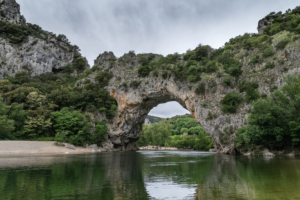
Mother Nature is behind the natural arch that is the Pont d’Arc. It’s located in the national natural reserve of the Gorges of the Ardèche.
In summer this is a great spot to take a swim or kayak and have a family picnic.
The erosion formed the arch around 124 000 years ago. In a few thousand years it might totally disappear.
It’s very likely that this natural bridge was used by the Homo Sapiens of the time. The caves in the area have shown signs of being inhabited.
Millau Viaduct
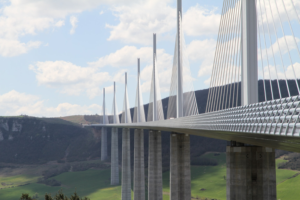
We finish off in the Tarn valley with the Millau viaduct. This is a very long bridge (2 460 meters) that allows cars to cross over the steep landscape. The conception of the bridge took 13 years of technical and financial studies, but only 3 years to build.
It holds the record for the tallest road bridge. One of the towers is 245 meters high!
You can only experience this bridge by car. The best view is from the rest stops right before getting on the bridge. Take the time to take a picture and enjoy this architectural challenge of a bridge!
This post was all about the 17 most famous bridges you must see in France!
Save for later on Pinterest!

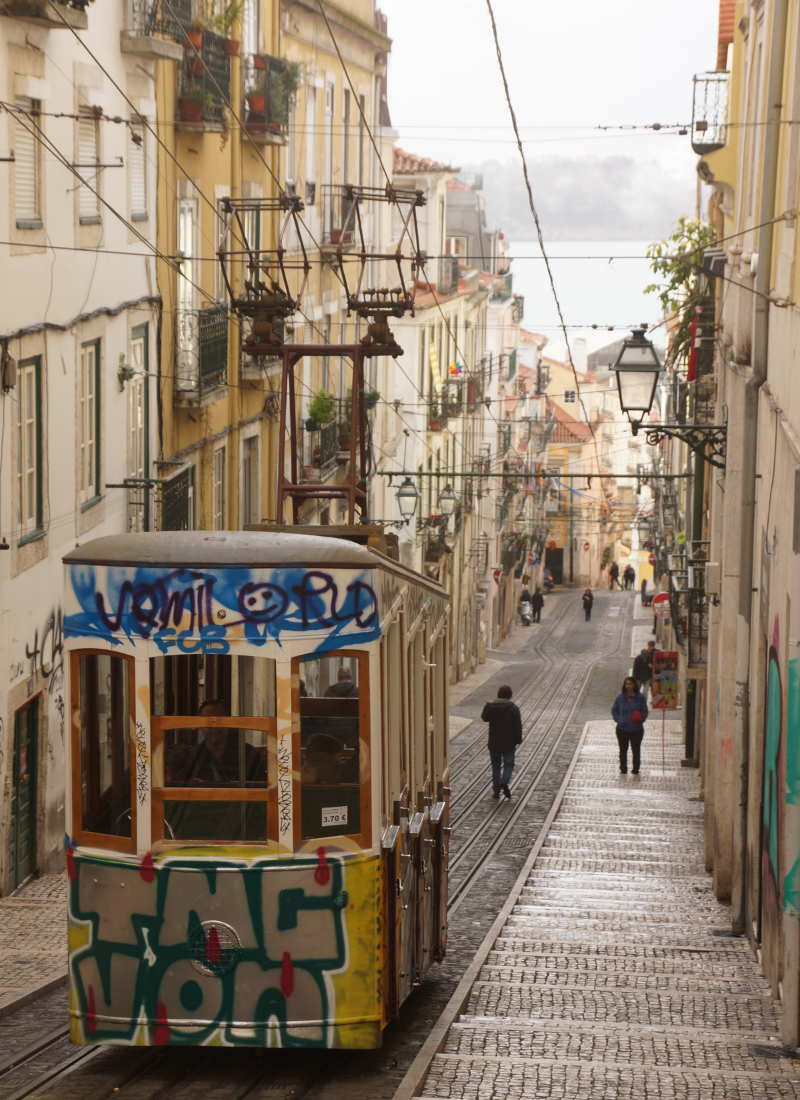
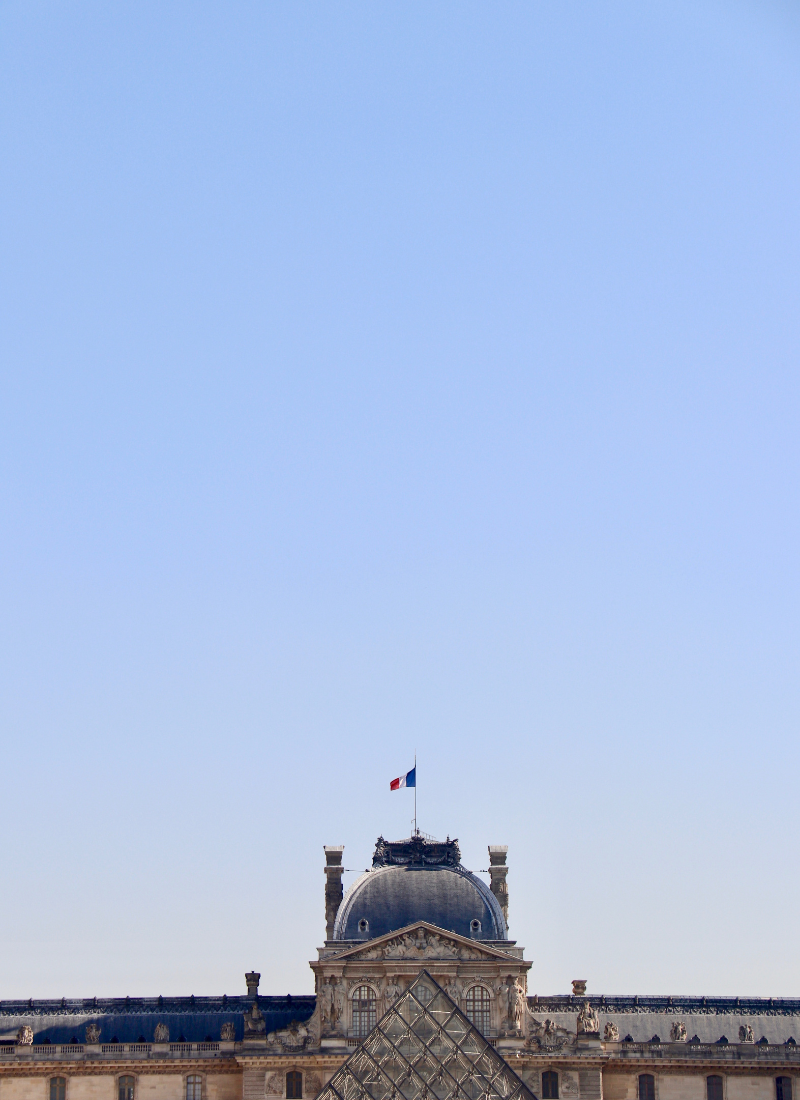
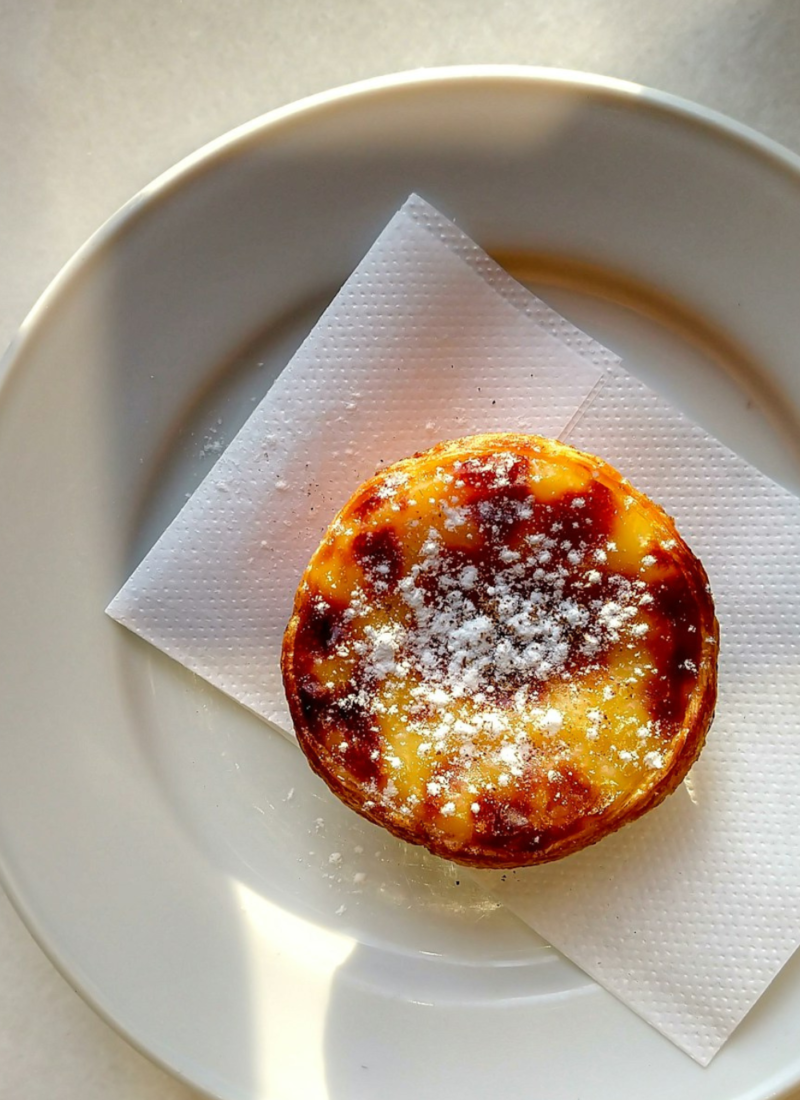
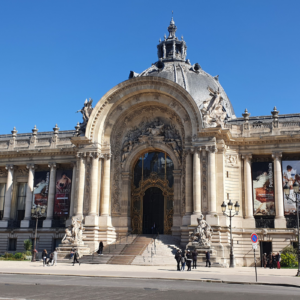
I agree!